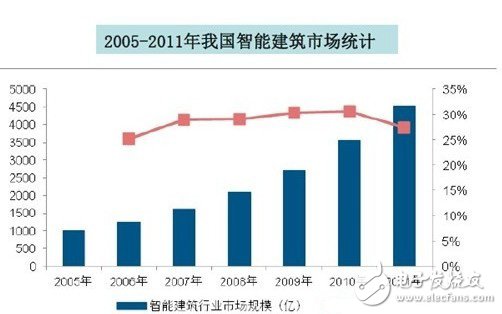In China, the smart home market has gone through four stages of development. It was in its infancy from 1994-1999, 2000-2005 was the initiation period, and 2006-2010 was the lingering period. Since 2011, the market has clearly grown, and the increase in the volume of smart homes indicates that the smart home industry has entered an inflection point, and entered a new round of integration and evolution from the wandering period. Recently, at the 2013 Home Appliance Energy Conservation and Intelligent Technology Conference, Bai Junxiang, general manager of Konka Group Industrial Development Center, analyzed and gave suggestions on the development of China's smart home market.
From 2011 to 2020, China's smart home is in a period of integration and evolution. From the perspective of application development status, China's smart home is initially entering the stage of integration and evolution. The main problems are: lack of standardized and unified industry standards; industry core technologies need to be broken; application models need to be innovative, product stability and intelligence need to be further improved; the industrial chain is incomplete, and there is a lack of a perfect social cooperation system; cross-industry Cooperation is difficult and marketing efforts are not enough. At present, the main domestic smart home market is still some high-end markets, such as villas and smart communities, and the fastest growing markets are smart hotels and smart offices. However, the development of the ordinary residential smart home market is very slow.

At the same time, the market scale of China's smart building industry continues to maintain a relatively high growth rate. According to the statistics of "Development Outline of Intelligent Building Industry in 2011", the market space for intelligent building in China was about 160 billion yuan in 2007, and has expanded to 450 billion yuan by 2011; it is expected to exceed 500 billion yuan in 2012, with an average annual The compound growth rate is as high as 25%.
The building intelligence industry has great potential for development, and is considered to be a very important industry in China's economic development, and its industry leading role cannot be underestimated. At present, China's smart building area accounts for a relatively low proportion of the new building area, but its development potential is huge. According to statistics, the current proportion of smart buildings in new buildings is 70% in the United States and 60% in Japan, but only about 10% in China in 2006 and is expected to increase to about 33% in 2014.
Smart TV and smart phone are used as control terminals to manage the entire smart home system. Using smart TV as the control platform, it can realize smart lighting control system, home monitoring system, audio-visual entertainment system, information terminal, etc .; smart phone and smart TV combination, smart phone as remote control, smart TV as screen, to achieve intelligent control, intelligent The mobile phone can exist as an independent platform to control some TVs at home.
Lighting control, electrical appliance control, electric curtain control, background music control, video intercom, access control unlock, household video intercom, message photo, wireless temperature and humidity detection, wireless light detection, wireless gas, smoke Concentration detection, wireless carbon dioxide detection and wireless air quality detection and other application functions, Bai Junxiang suggested that relevant companies should find the market entry point. He believes that opportunities for smart home manufacturers can start with lighting.
Two key factors to enter the market, Bai Junxiang said that one is to adopt Zigbee technical standards, and the other is to attach importance to system research and development. The advantage of using the Zigbee technical standard is convenience. It only needs to provide a normal power interface, without the need for additional signal lines and power lines, which saves a lot of wiring costs. Only the nodes can be replaced during failures, which is convenient for daily maintenance; security, It is not easy to be cracked; mainstream, most domestic smart home companies currently adopt this technical standard. For future industry standards, it is recommended to adopt the Zigbee standard.
In terms of system R & D, there are no barriers to hardware production, but the profitability is poor. Software development can not only increase the added value of smart homes, but also increase the synergy with Konka Group's mobile phones, TVs and other terminals.
Bai Junxiang pointed out that when the smart home market enters a period of integration and evolution, the lack of killer applications is still an important factor in the market that has not yet flourished, so he also looks forward to innovations in application methods and opens a breakthrough in the smart home market.
Guangzhou Ehang Electronic Co., Ltd. , https://www.ehangmobile.com